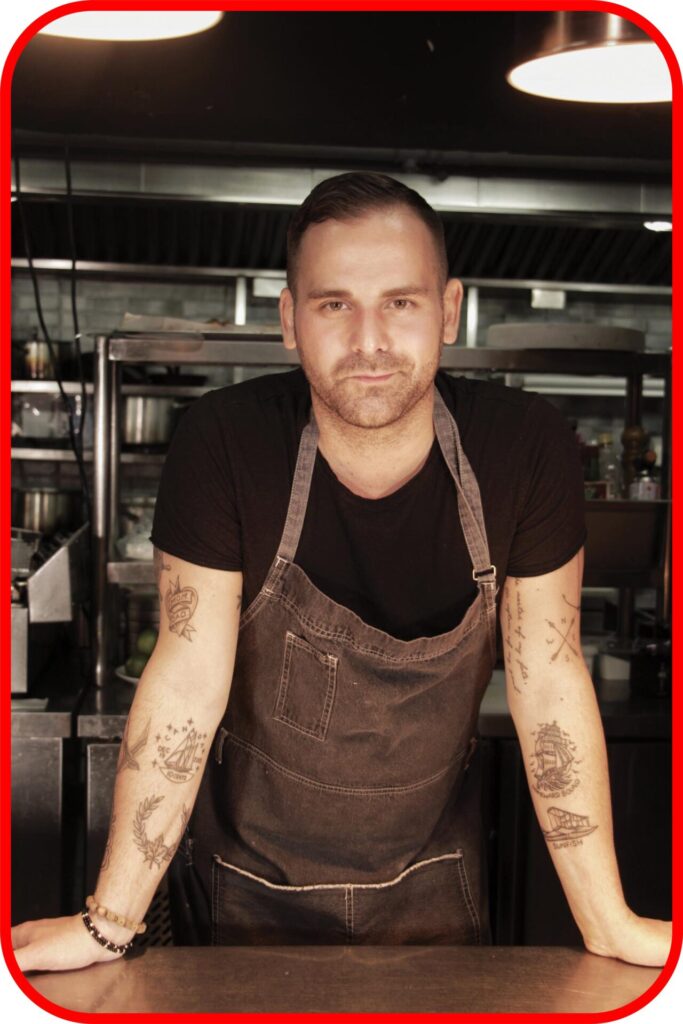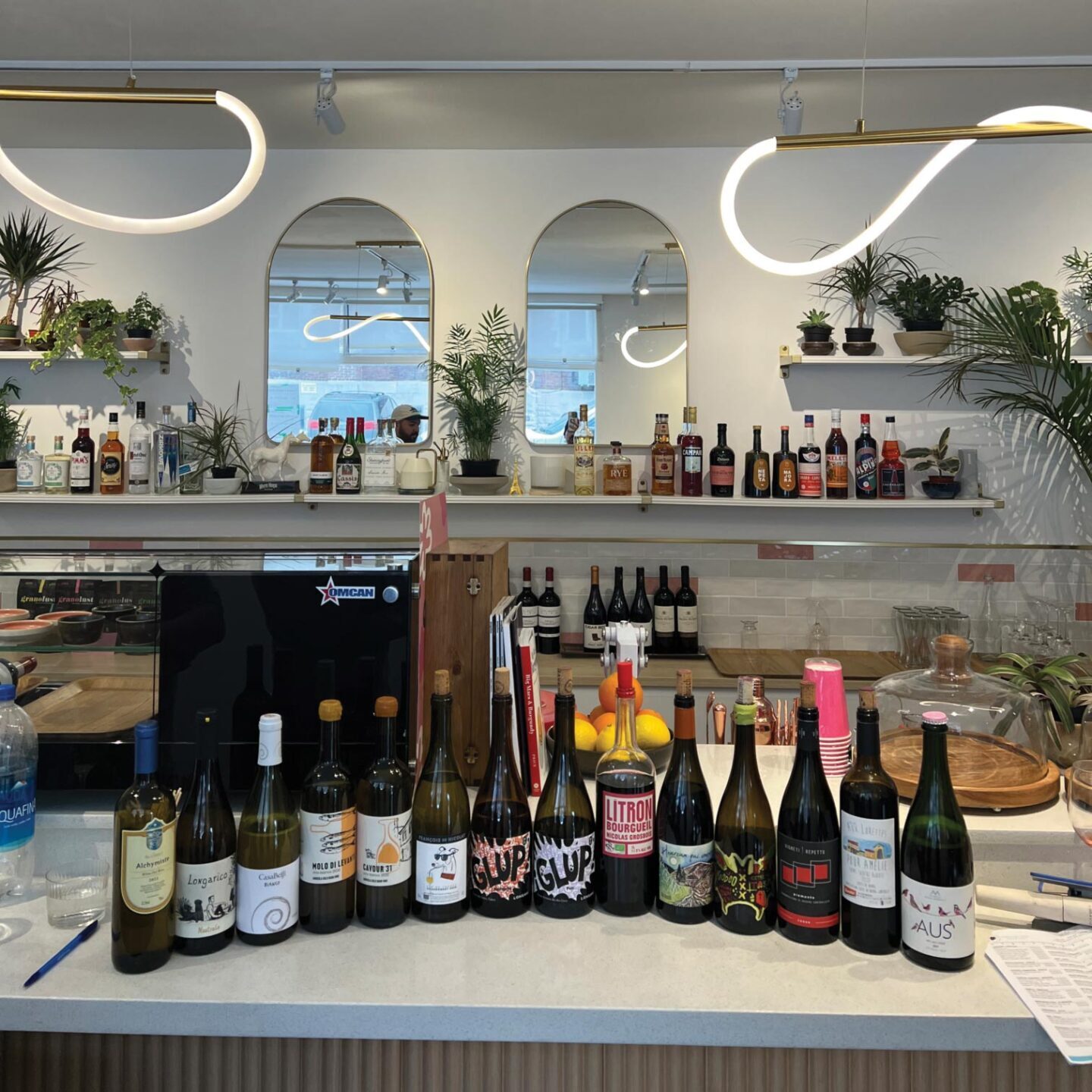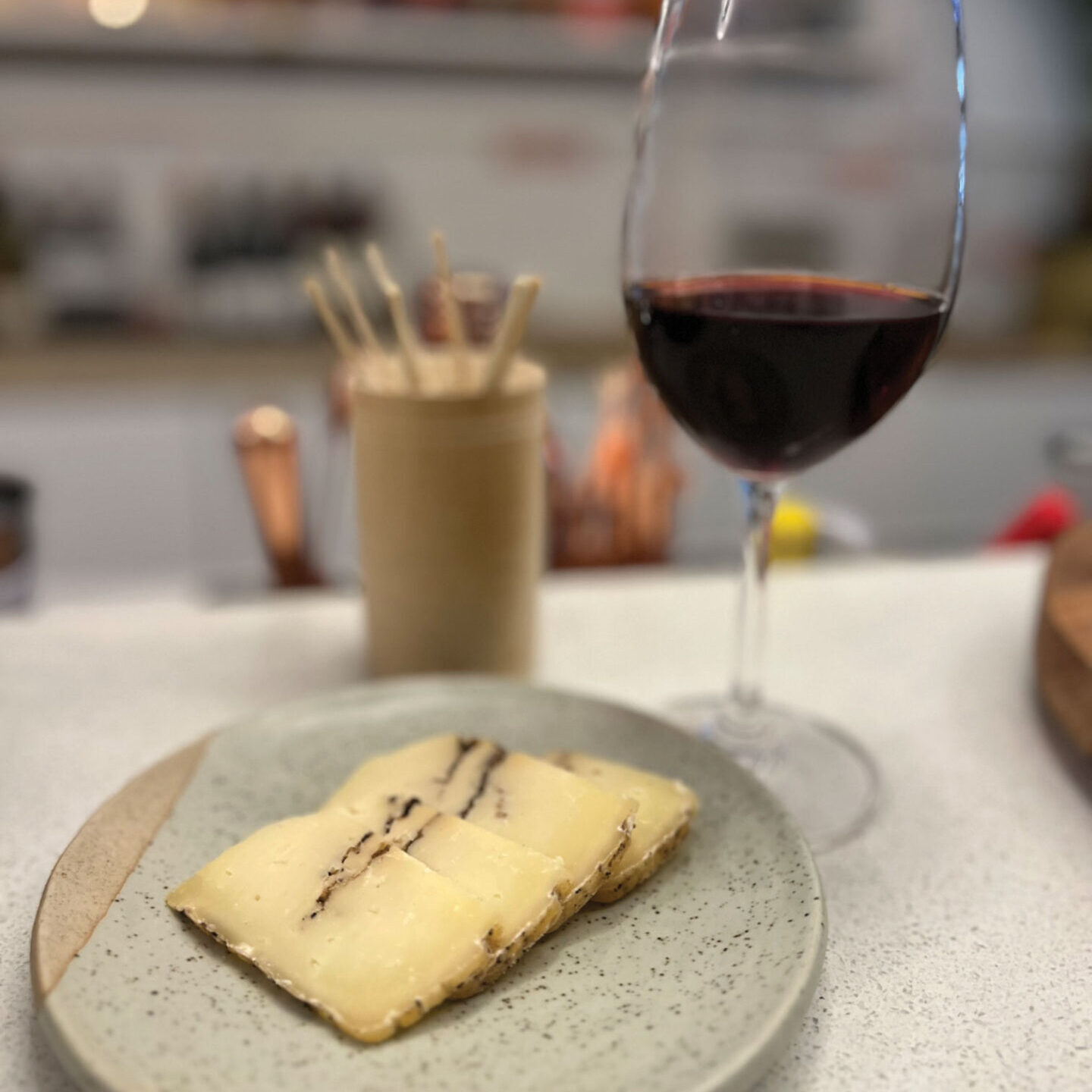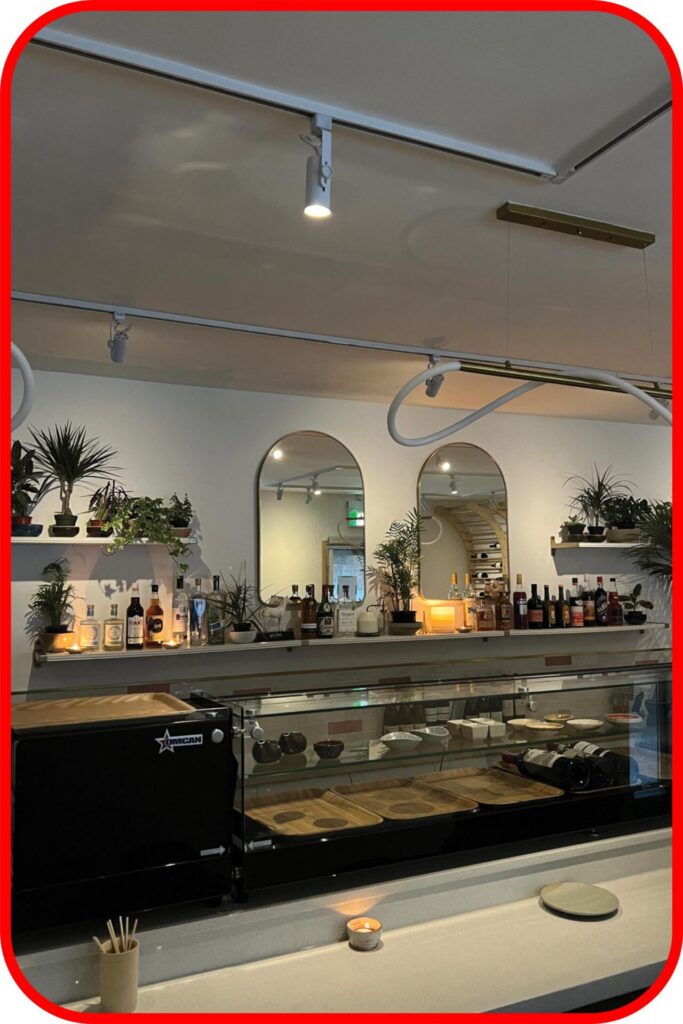Introducing Trinity Market: The Ultimate Collab
Chef, author, lifelong seafood fan and restaurant rethinker Matt Dean Pettit is the kind of person who seems to always be deconstructing and reconstructing—finding success with ideas that initially seem to “break the rules”. His previous restaurant, Rock Lobster, introduced authentic seafood experiences in downtown Toronto (successfully, and far, far away from any ocean). He opened a ghost kitchen, Coast by MDP, in 2020. And now his new concept, Trinity Market, takes a bold step away from everything a physical restaurant is supposed to be.
So, what exactly is it? Well, it’s part food hall, community centre and curated convenience store, with a bottle shop and homewares boutique thrown in for good measure. What it really is though, is a hospitality business that’s perfectly in sync with the habits, interests and needs of the community it serves. It’s also a concept the industry should pay attention to and learn from.
Toronto’s Queen West neighbourhood was deeply scarred by business losses during the pandemic, but this neighbourhood is also the Queen of the Comeback. It’s seen its ups and downs over many decades and has reinvented itself without losing its bohemian, community vibe.

Trinity Bellwoods Park is the centre of this cultural universe. It’s where apartment and condo-dwellers converge daily for coffee, picnics, strolls, wedding photos and tennis. It’s surrounded by some of the city’s most beloved restaurants, bakeries, delis and shops. And in March, it welcomed Trinity Market, a new kind of hospitality, food and retail experience on the corner of Queen Street West and Bellwoods Avenue.
Trinity Market is the culminating vision of Pettit’s three-way partnership with sommelier Javier Castillo and Chef Milosz Malycha, his partner in the service-inspired tableware company, Spirit Wares.
“We call it “Trinity Market” in homage, of course, to Trinity Bellwoods Park, but we sort of also have three components to our business,” Pettit explains. “One, we’re right across from the Ukrainian Church and there’s a kind of “holy” aspect we relate to the three aspects of our business. One, it’s a retail bottle shop. Two, it’s a retail tableware outlet and, ultimately, it’s connected all the way down through our snack and wine bar business.”
We choose the best little bites we love and are always rotating and adding. And everything is in a snack form – you build your own food program as a customer.
Stepping inside the cozy, 600-square-foot space feels a little like being transported to a little place in California. “It’s got a clean little beach vibe,” says Pettit. “It’s that café by day, and a snack and wine bar by night that serves little bits and bobs as you snack and drink the night away.” The other big twist, particularly for a business where two of the three partners are chefs, Trinity Market doesn’t actually make the food it sells. Pettit and his partners source and select foods and products they love, made by other makers they openly promote at Trinity Market, and their team heats or finishes it, then garnishes and serves it. “The food program comes from across Toronto and Ontario— all the places and favourites
we love, from people we’re close to—and it’s constantly rotating. We put everything on display just like snack bars or tapas in Europe. The customer comes in and they pick and choose what they want. Everything is displayed in two counters, over the bar, and served on small snack plates, ramekins and bowls from Spirit Wares, our dinnerware company. It’s a lot like dim sum, actually. You’re passed something in a small tray, but we’re serving it in a really beautiful, unique vessel.”
This playlist-style food experience is curated by foodies in the know, but with endless potential for personalization based on the customer’s taste and preference. “You can get a little tuna tartar, which is served cold over the counter—just like pinchos in Spain or izakaya yakatori in Japan where things are already on display. It creates such a strong food community, and it says where it all comes from on the menu, along with the maker’s social media handle. We choose the best little bites we love and are always rotating and adding. And everything is in a snack form—you build your own food program as a customer.”


Some of the menu items are available exactly as one would find them at their place of origin, but others have been specially created for Trinity Market. Noce, a popular Toronto pizza place, does a custom, Roman-style square pepperoni pizza slice. The Trinity team heats it up and adds whipped burrata and basil (should the customer’s desire), plates it beautifully, and serves it. Pettit sums up the concept as “interactive retail”. “You walk in, and every single wine is available to try in a three-ounce option, and if you like it, you can buy it off the wall. The pricing is very approachable for everybody. I want to make sure we’re really conscious of value and giving people the opportunity to have a really fun, unique experience with dining. I love snacks and I love tapas—small dishes and bites. The food is Canadian, Torontonian—a global mix of everything. We have Venezuelan, we’ve got Argentinian, we have Italian, we have Korean, we have Japanese—it’s so diverse. So maybe you come in and you want Italian but maybe I want Asian that night. So now we have something for all of us.”
While Trinity Market will offer a constantly rotating menu of options, the team has consciously sourced cornerstone products or hero menu items, like pizza slices from Noce and baguettes, croissants and sourdough bread from the popular Blackbird Bakery. Using the space as a retail outlet for established local food businesses allows them to reach into new communities without risk or overhead. And, branding the concept as a “market” allows for infinite adaptation of the menu and experience.
To make great food, that can be an extreme cost to operators. We looked for ways we could still serve amazing food, white working with people the way we do for catering and events.
The partners’ personal obsessions with food and drink are a key component of staff selection and training. Pettit highlights the importance of educating the service team so they can represent the people and story behind each item and act as concierge to the total experience. “It’s about strong education,” says Pettit. “We all need to know what the item is, where it came from and who made it. We need to be able to tell the story of, not just “what” the item is, but why it was selected and what’s in it. Because we’re not doing the prep work ourselves, we use that time to be over-prepared, and give our customers a great experience.”
If this concept seems a little diffuse, it’s because it is. The glue that binds it together is community, a foundational touchpoint that has become a priority over Pettit’s 30 years in the hospitality industry. It’s not his first rodeo or his first restaurant concept. “It’s never been this difficult to be successful. The hospitality industry relies on people to come in our doors for example, or shop online to make money, whereas other businesses might not face those same challenges. We stick with it because we love it dearly. I was out of the business of owning for about five years when we sold Rock Lobster at a very lucky time, not knowing what was going to happen a few years later with COVID. I took what I learned there and Milos and Javier have almost as much experience in the industry as I do. We looked at what made sense globally. We looked at where costs have become exorbitant for owners and retailers. We all love global food, and looking at trends, two things really stood out to us.”

“To make great food,” he notes. “That can be an extreme cost to operators. We looked for ways we could still serve amazing food, but while working with people the way we do on catering and events. These businesses are able to continue to grow and thrive when a typical restaurant might not because there are so many overhead costs. So, we took that “catering and event” model, bringing in the best of the best, almost like a wedding. We source foods we love, and then we look at costs. Let’s say we love a pizza, and a slice costs $2.00, I’m going to sell it for $4.00. We know the hard costs and can still deliver great value to the customer with a profit for us. When you make something from scratch, you’re bringing in the raw ingredients, making it, cooking it—that’s a lot of time, expertise and care before you even look at front of house costs to flip that item. And, if you don’t sell it, well then, you’re in trouble. Scalability—the flexibility to adapt to fluctuations in demand—is built right into the Trinity Market model. We wanted to look outside the box and say, “Listen, let’s bring it all in.” And, of course, give credit for the product to the people who made it. A lot of places bring in goods and they put them on their counter— cafés have done that forever. That’s not new. But our idea is that we want to showcase where it’s from and make that part of our story and experience.”
Trinity Market also offers new partnership opportunities for entrepreneurial makers, bakers and chefs who find themselves looking for alternatives to traditional ownership. Supplying a food-forward enterprise that can sell their food not only adds income, but promotional opportunity and the chance to test and perfect their products. Pettit and his partners welcome chefs and F&B innovators in for tastings and, if they like it and it fits, they’ll trial it in the Market.
Pettit also acknowledges that a large part of the model design is also about creating lifestyle flexibility across the enterprise. “We’re in this industry, and we love it. But now, we all have families and can’t devote the same time we used to. Trinity Market is a means to doing what we’ve always loved, but we don’t have to be the ones doing all the cooking all the time anymore, early morning and late night. This goes for our team too. We really encourage that work-life balance. Our hours are just 10 a.m. to 10 p.m. and we really hone in and do great service in between those hours. It allows us and our team to have a really strong work-life balance and a lot of fun. We’re all in this together. We’re all connected in this industry.”
Trinity Market is being promoted as a “Tasting Room, Event and Small Business Collab Hub”, part of a plan to use the interior and exterior space for events and for neighbourhood vendors to put up a tent to promote their food or retail items. While they were building, the Trinity Market teamed up with Kensington Flea Market, hosting a series of pop-up vendor markets from September to December on their patio. “We were just a space for people to come and do pop-up markets and it was amazing because we took a quiet little sort of residential corner and the neighborhood loved it, because there was something there that was safe, and family friendly; there were dogs everywhere while people bought from these small independent businesses. It was fantastic, and we’re going to continue to do a lot of that.”
Queen West is always busy, but the return of warmer weather marks the end of urban hibernation period. When the strollers, bikes and dog walkers return to sidewalks and green spaces, Trinity Market will have the opportunity to test its full offering. Location and amenities are crucial considerations for any entrepreneur, and while Trinity Market is on the small side with seating for roughly 20 people, they have one of the only patios on the strip that will provide west-facing sun until twilight










